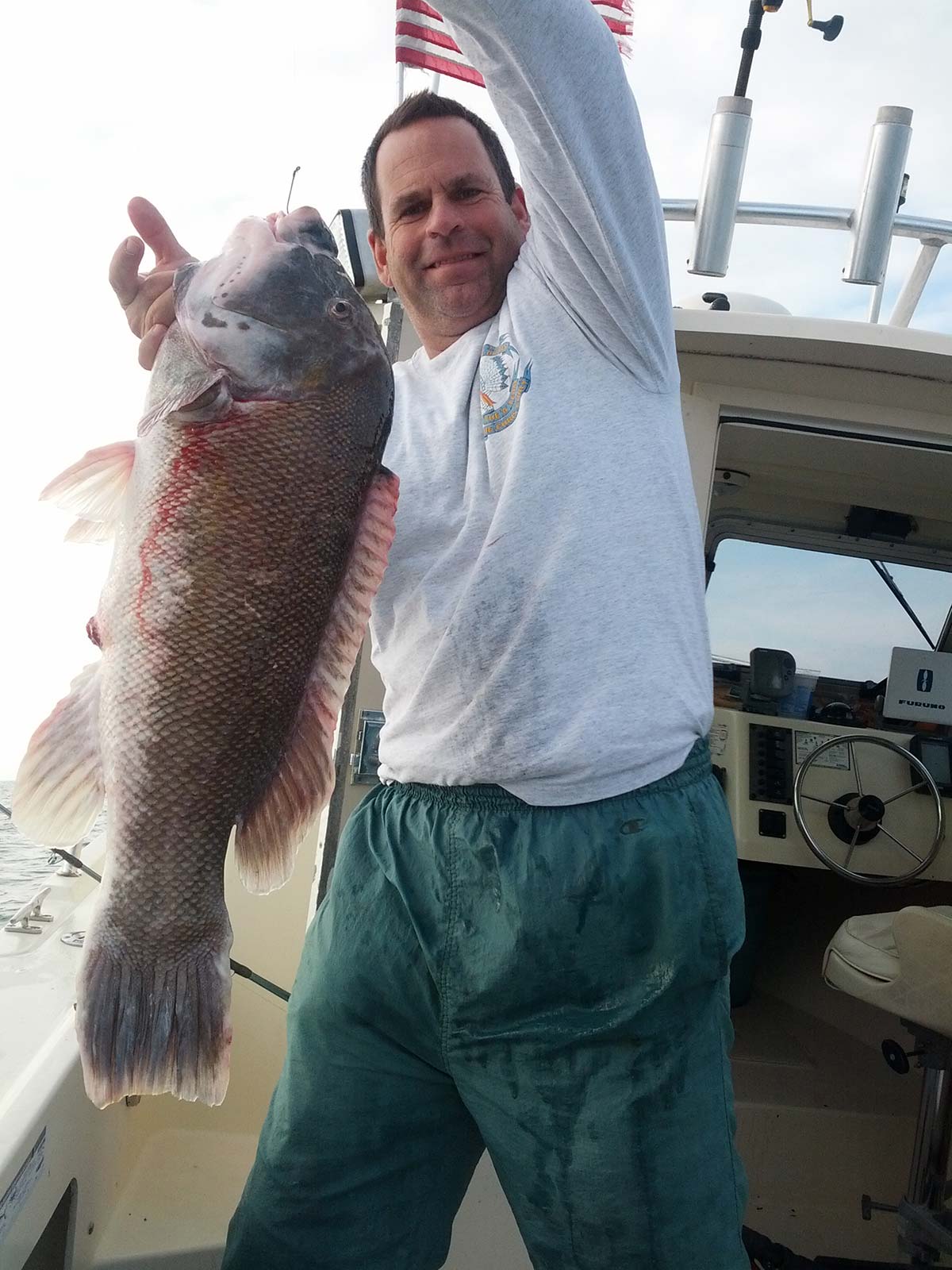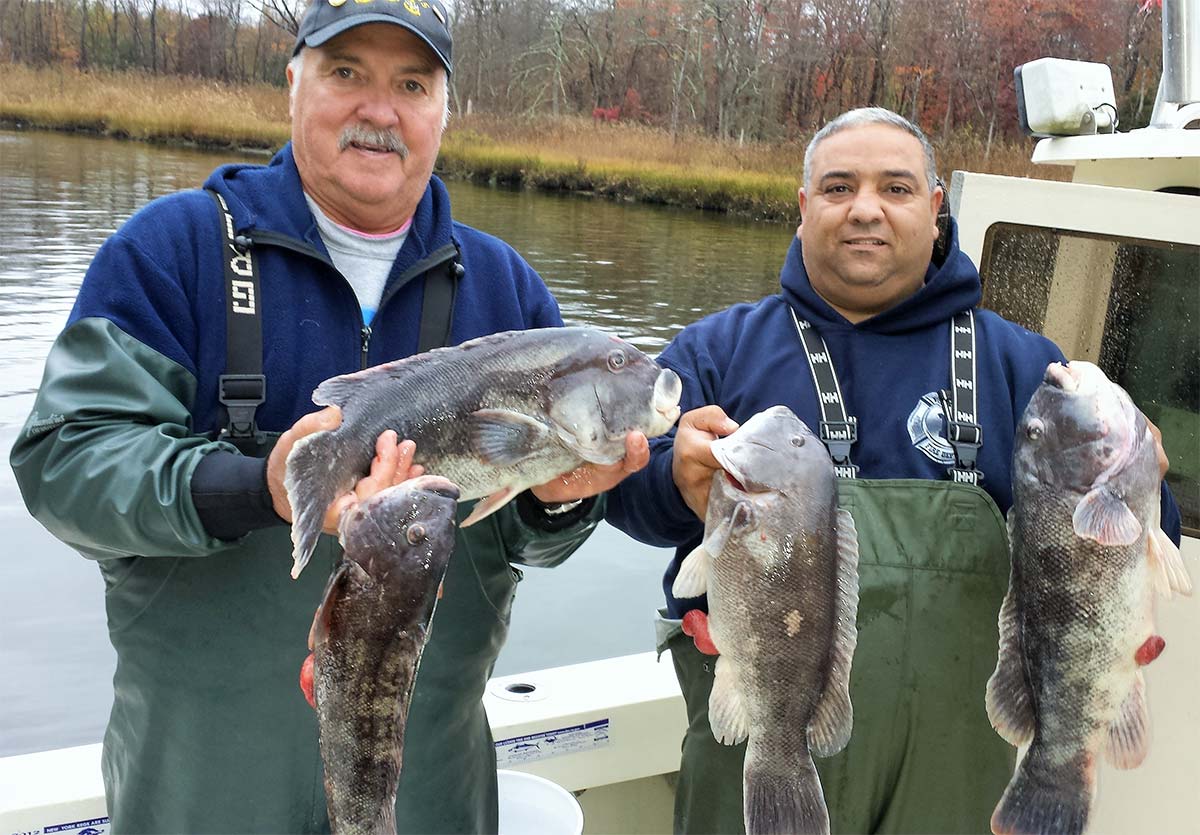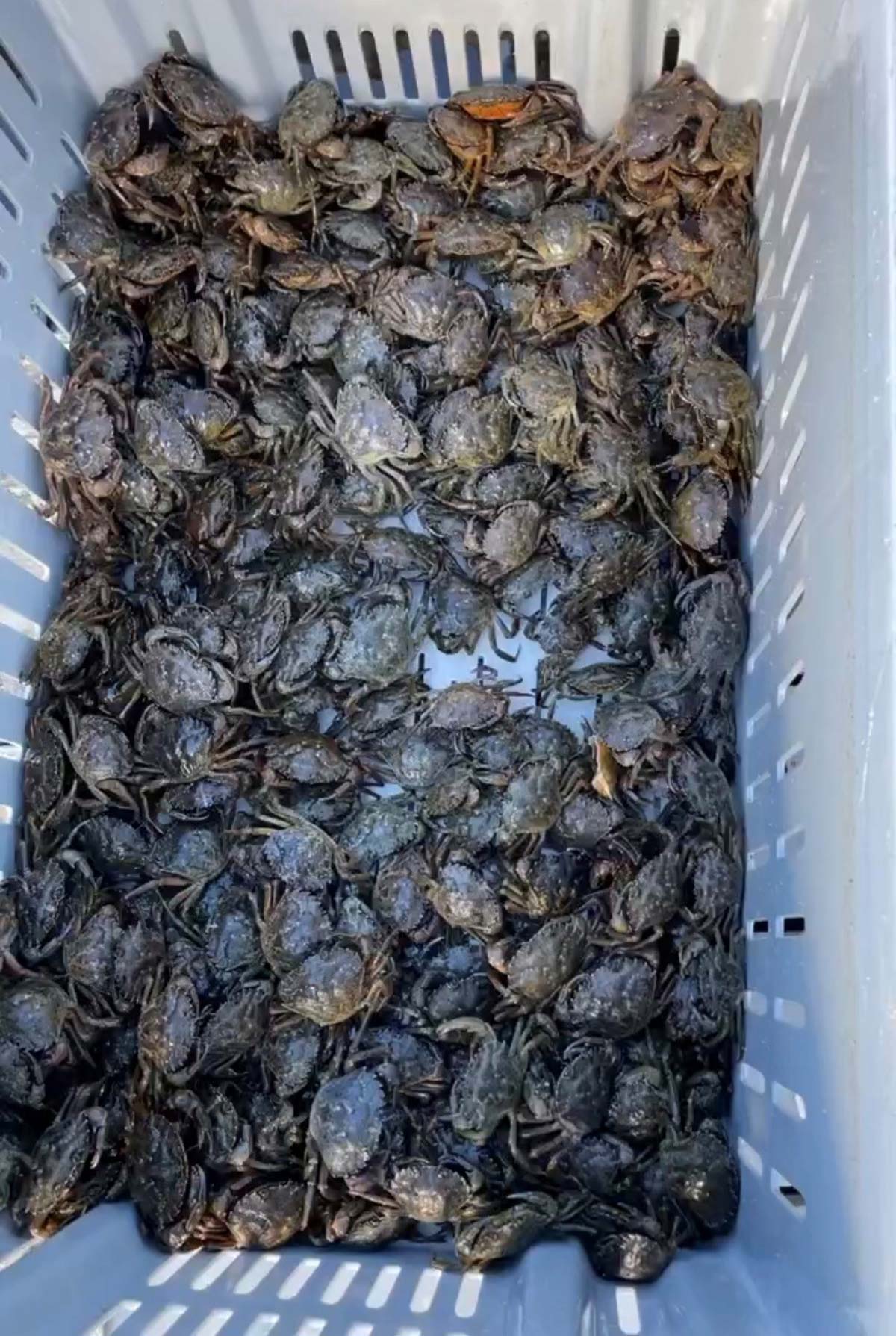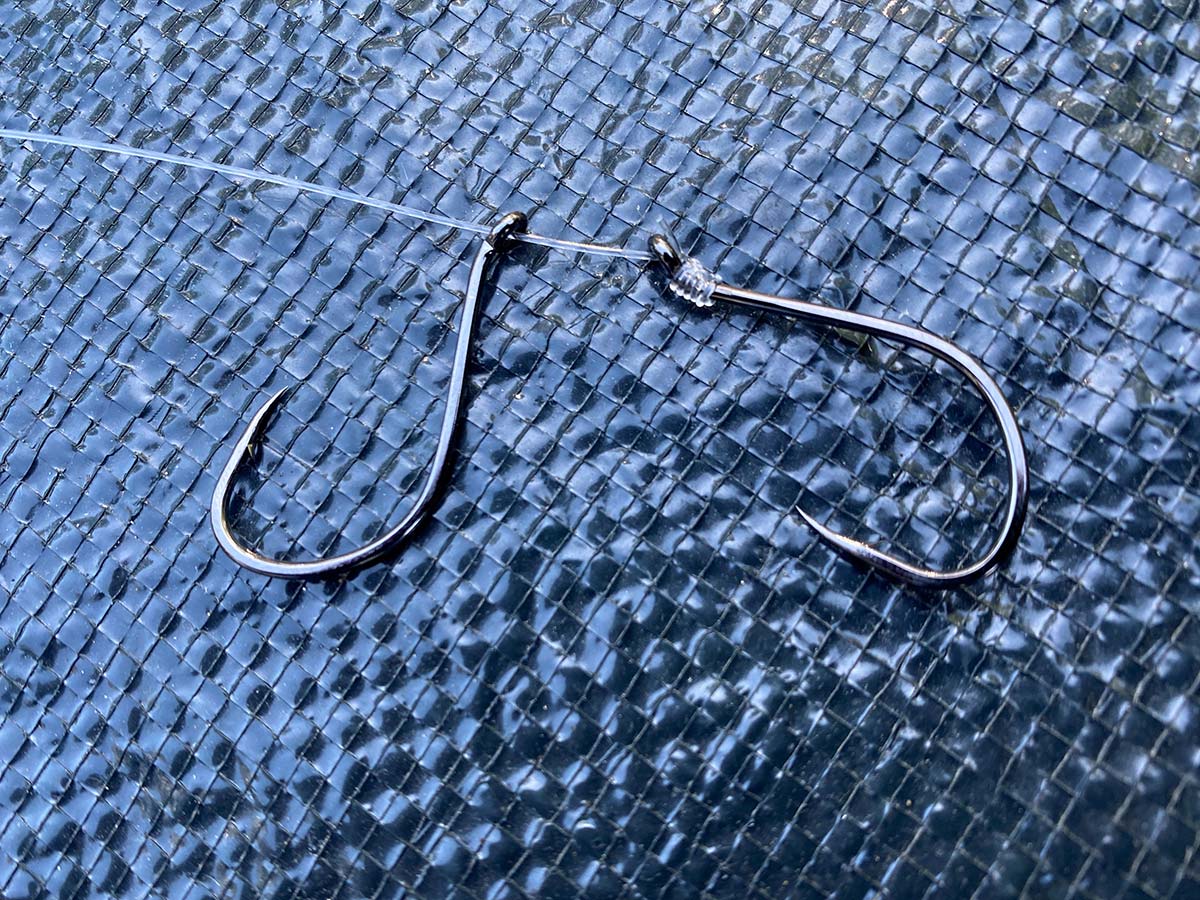
Insights on a proven reef for November tog fishing.
Unfortunately by early to mid-fall, most towns, villages or even private marinas along both the South and North Shore are quite adamant about all boat owners pulling their vessels between November 1st and November 15th. Although this sits well with most seasonal boaters and fair weather fishermen, it come with great disappointment to the hardcore striper and tog fisherman as both species offer some of the best fishing of the entire season by the month’s end. Stripers of all sizes are an easy target as they migrate to their winter grounds usually traveling within a mile or two off the beaches where a 2- or 3-ounce diamond jig can provide hours of fun just a stone’s throw from any of the South Shore inlets right into December. Meanwhile by the time Thanksgiving rolls around, water temperatures in the 55 to 57 degrees range are ideal for prime time blackfish action without the nuisance of small porgies and pin sea bass pecking away at your crab. Instead, you have many quality to monster blackfish just waiting to chomp down on your crab at one of the best locations the East End reef has to offer, which is none other than the Shinnecock Reef.
A Well Enhanced Piece Of Ground
The 35-acre Shinnecock Reef (40.48.160 72.28.670) is located two nautical miles south of Shinnecock Inlet with a depth of 79-84 feet. Prior to the reef expansion, this reef was comprised of eight vessels, four barges, surplus armored vehicles, one drydock, rocks and a steel and concrete tower. In 2018, remnants of the Tappan Zee Bridge, steel and concrete bridge rubble, steel pipes and an additional 75 rail cars were deployed to help bolster space and fishing opportunities.
The Shinnecock reef expansion helps to restore marine habitat and grow fishing and diving opportunities. The rail cars used for the reef expansion were cleaned to mitigate potential impacts to sea life before being deployed; once the rail cars settled to the sea floor, jumbo blackfish, black sea bass, cod and summer flounder move in to inhabit the new structures, and encrusting organisms such as barnacles, sponges, anemones, corals and mussels cling to and cover the material. Over time, the recycled structures create a natural reef-life habitat.
In addition, since 2018, more than 1,093 tons of material which included barges, 885 tons of clean, recycled Tappan Zee Bridge material, as well as deconstructed DOT project materials; 35 tons of triangular trusses; 100 tons of concrete deck panels; 750 tons of steel foundation pipes; six tons of steel lattice trusses; 13.1 tons of steel sheeting; 37 tons of steel beams; 13.8 tons of steel columns; 9.4 tons of steel girders; 0.9 tons of steel channels; 128 tons of steel pipes; and three decommissioned canal boats, including a 110-foot barge, 74-foot tugboat, and 40-foot tender were added making this reef one heck of a blackfish refuge.

Electronics & Charts
I don’t understand why some boatmen would even consider leaving the dock without a GPS, bottom recorder, navigation charts and a VHF radio. Yet there are those who do. Regardless of whether you fish reefs, rocks or wrecks, it is essential to have the proper electronics on board to properly fish the structured fertile grounds.
A good quality bottom recorder is necessary as it will paint the picture of the structures that lie below. Once a favorite piece has been found, you should mark it with the MOB feature on the GPS and store it for future exploration. Regardless of what you may find, always have a plan by having some reliable GPS numbers to work with so you don’t set yourself up for disappointment.
Blackfishing is an art of its own, which makes fishing for them an even greater challenge. A few feet can make all the difference between catching hefty tog versus just standing around. A GPS will greatly assist in determining everything needed to anchor and settle exactly where you like. This, of course, takes a bit of practice, but before long it will become second nature. As for charts, they are a great source of pinpointing wrecks that seem to have potential. Last but not least there are the Blue Chart data cards inside your GPS which has a wealth of wrecks, reefs and rock piles to which you can easily steer. For the best results on these charts, make sure to update them every few years for the latest in navigational changes.
Anchors Away
Again, some basic knowledge and your GPS can put you exactly where you want to be. Anchoring for blackfish is almost always imperative, especially when deep water and strong currents are involved. Anchors must have a heavy chain approximately 12 foot in length and an ample supply of line to hold and move around over an area of structure. Keep in mind that the productive depth will vary between 60 and 80 feet; therefore, make sure you have enough scope to manage these depths.
Since there is always the possibility of the anchor getting wedged in between a sticky piece of structure, you should always have a backup plan with at least another anchor, chain and rope. Speaking of chain , keep in mind that the longer the chain the quicker the anchor will set and give you better control and fluctuation when setting up over a preferred spot. When it becomes time to lift the anchor, you’ll want to resort to an anchor ball which makes life a lot easier especially during the new or full moon when lifting the anchor becomes a tough job.

Tough Fish Tough Tackle
When it comes to challenging big blackfish, trust me, you’re going to need the tackle with plenty of muscle behind it. Rods with fast taper tips for sensitivity, and powerful butt tapers for the lift needed to haul the big bruisers from their sticky lairs and the backbone to manage moderate sinkers in strong current. My favorite combo is the 7-foot Lamiglas TFX7030CT Tri Flex Series, which is constructed of graphite and fiberglass which gives me the sensitivity and power I need to make even the broadest of togs fight a fair game. I match the rod perfectly with an Abu Garcia Ambassador 7000I conventional reel with the power and speed ratio at 6 to 1 which does a real good job of prying most stubborn tog off the structure before they have the chance to realize they’ve been had. Power Pro 50-pound Performance Braid completes the combo as this form of braided synthetic is undoubtedly one of the smoothest, strongest and sensitive.
As for rigs, it’s quite simple and extremely effective at the Shinnecock Reef. I start by tying a couple dozen super sharp pre-snelled Gamakatsu 3/0 Octopus hooks to a short 6-inch 50-pound fluorocarbon leader with the tag end tied with the standard Surgeons Loop Knot. Be sure to pre-tie at least a couple dozen at home before heading out so not to waste time while you’re fishing. It is relevant to have plenty of extra snelled hooks and sinkers on hand since losing terminal tackle is inevitable when hunting down big tog.
My next step is to tie an 8-foot length of 50-pound fluorocarbon leader to main line of Power Pro via an Albright Knot. My next two steps are to tie a Loop Knot to slide on the sinker, then round out the rig by tying a Dropper Loop 6 inches above the Loop Knot then attach the snelled hook to the Dropper Loop and you’re ready to bait up and fish. This rig should be kept to one hook and ideal when using cut crab. On the other hand if you prefer to use small whole crabs such as small green crab or whole white crabs, you may want to resort to a Snafu Rig. A Snafu Rig consists of 2 snelled hooks joined together usually with an Albright knot with the total length of the rig the same as a snelled blackfish hook of 12 inches. The general purpose of this rig is when fishing a whole live crab; it can be hooked on both sides behind the claws to increase the odds of sticking a slob tog. I usually tie several dozen of these rigs before the start of the season using super sharp 3/0 Gamakatsu Octopus hooks. I also like Mustad’s 2/0 Big Gun hooks on some of the rigs which works well when the tog play hard to get.

Water Temps vs. Crab Selection
While the blackfish menu can be quite selective this day and age, water temperatures and location are more of a factor when it comes to munching out on their favorite crustacean. It’s relevant to note that the colder the sea water is to 53 degrees, the harder the bait you employ, the better.
Since water temperatures during November will range between 55 and 58 degrees, white, hermit and green crabs will be most preferred by the tog. Fiddler, Asian and calico crabs will certainly catch the smaller rats that are often abundant at all the reefs which can be a nuisance when trying to get to the hefty white chins. Small white leggers, which are better known as white or stone crab, fished whole undoubtedly catch the double-digit slob togs, with whole medium size hermit crabs coming in at a close second as a favorite. Green crabs are most commonly employed due to easy access and the cost being far less than a bushel of hermits and white crabs. Green crabs, though dependable, have had days when they weren’t touched while I was slaying tog on white and hermits. Then again, I’ve had days when all they wanted was the greenies. Therefore, if you take your togging seriously and want to tangle with true bulldogs, spend the extra few bucks and pick up a half-bushel of hermits and half-bushel of whites. Half a bushel of both together will set you back around a Franklin. Not bad if you have a few guys tagging along and everyone kicks in.
Whitewater Awareness
| MUNCHIN WHEN IT’S CRUNCHIN |
| If you are serious about putting some real sluggers in the box—do yourself a favor—grab the smallest green and white crabs you can find or purchase and rig it Snafu style. Crack the front shell ever so slightly to release some fluids and keep hold of that rod as you will know when that jackhammer slam will mean you have a tog with hefty shoulders knocking on your door. Some days fishing whole crab can test your patience, while other days you can’t get the bait down fast enough. Make sure to have both green and white crabs on board as there is no telling day by day which will produce best. Hermit crabs do work just as well if you can find or purchase them. However, I’m confident the green and whites will work just as well if not better late in the season. Unbelievably, we also scolded the tog real well while employing Asian crabs on a rock pile south of Shinnecock just south of the Shinnecock Reef in 90 feet of water, so don’t toss them from the equation. |
Lastly, it is the end of November and all the south shore inlets share a common bond: whitewater, which is sometimes downright dangerous. Always remember safety must always come first. Make sure to check weather and sea condition reports before heading out to avoid disappointment or danger should the breakers be unpassable. Days when winds are less than 15 knots are desirable, which should provide relatively calm conditions at the breakers, particularly when the winds are from the north or northwest. Fortunately, if the weather does a flip, the run back to the inlets from the Shinnecock Reef is relatively quick and with some quick thinking, you should be able to get back inside before the swells begin to build.
So there you have it. Keep in mind there is a hassle free boat launch ramp located along the southeast side of the Ponquogue Bridge which is only minutes to Shinnecock Inlet and less than 15 minutes to the Shinnecock Reef. Remember safety first and practice self-restraint. All those big blackfish are females, therefore be conscience of what you keep, so our young anglers of today will have big blackfish for tomorrow.




